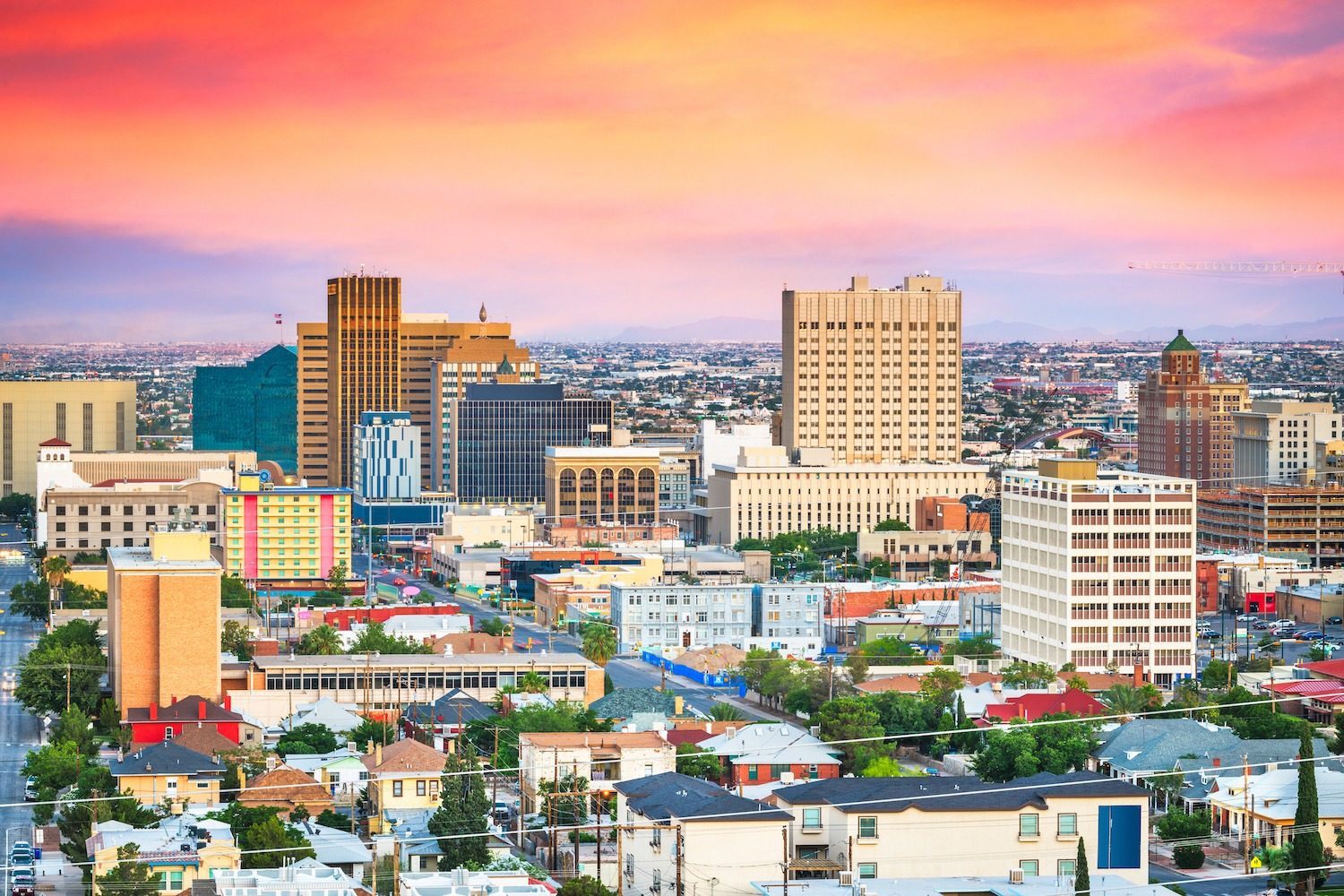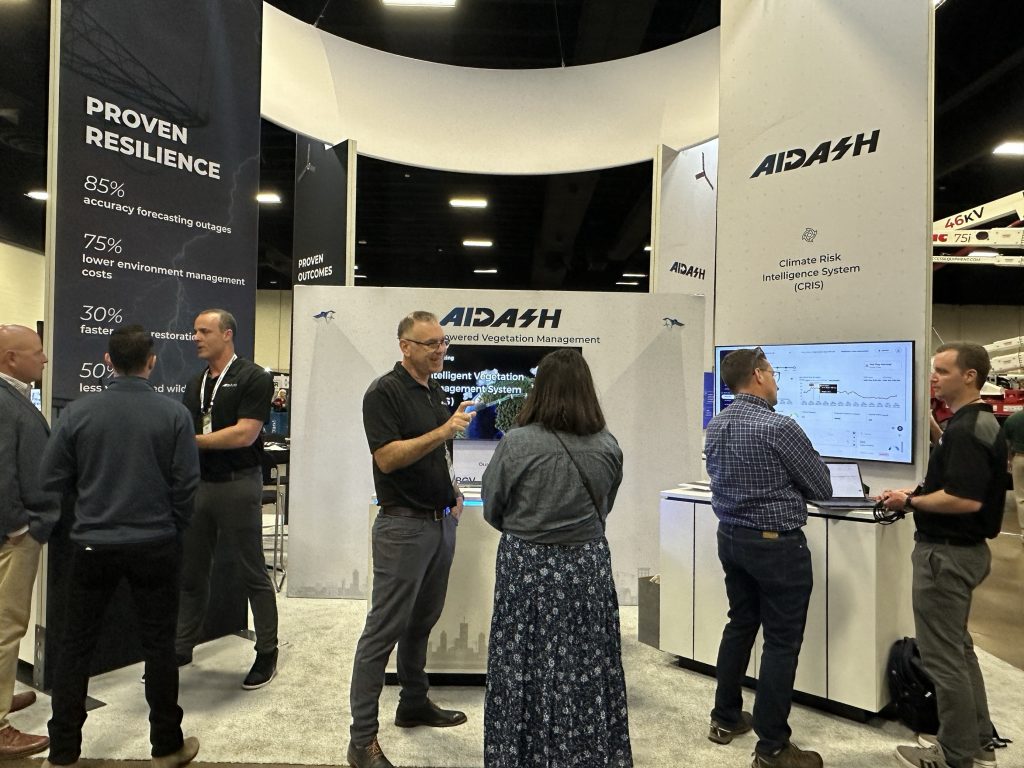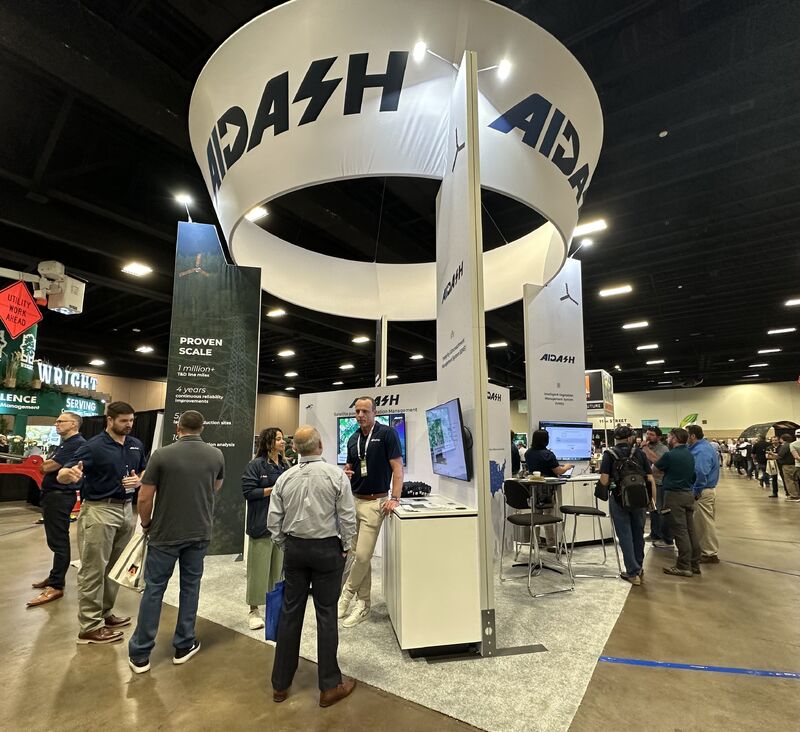Making the case for trees, safety, and tech at Trees & Utilities 2024

More than 1,200 utility vegetation management (UVM) professionals made their way to “Where the West Begins”— Fort Worth, Texas — on September 10-12 for Trees & Utilities 2024. As a proud sponsor of the event, the AiDASH team was there in force.
Beyond the bustling trade show floor, attendees engaged in informational sessions that covered topics like safety, the latest UVM best practices, wildfire mitigation, and of course lots of technology. These sessions provided both broad industry insights and detailed explorations into the latest technologies and techniques.
We identified a few key themes that emerged throughout the event:
- Getting wiser about using trees as a resource.
- Improving safety.
- Current and emerging technology solutions for UVM.
- Turning data, analytics, and technology into actionable insights.
The case for trees
Though it’s a bit tongue-in-cheek, the concept behind “making a case for trees” is that utilities can integrate tree planting into their vegetation management strategies. Planting the right trees in the right places can help reduce future energy demand, creating a win-win for both the environment and energy efficiency efforts.
This concept was front and center during a panel discussion moderated by the Arbor Day Foundation’s Kristen Bousquet, titled “Reimagining Energy Efficiency Panel: How to tap into additional funding and make the case for trees.” The discussion highlighted the significance of the recent $1.5 billion federal investment into the Urban and Community Forestry Program, which is aimed at supporting tree planting and related activities in overburdened and disadvantaged urban communities.
A shift in mindset from viewing trees as a nuisance to recognizing them as valuable energy-saving resources can have far-reaching impacts beyond just the trees themselves. In addition to the positive public relations benefits, utilities can play a pivotal role in helping communities mitigate the effects of heat islands, directly improving urban resilience. To support these efforts, Illinois has developed a Technical Reference Manual to guide utilities in designing energy efficiency programs that leverage the benefits of tree planting.

The “Risk-Based Decisions for VM and Beyond” session led by Jonah Keim from E-Source reinforced the idea of treating trees as assets within the utility network.
With rapid advancements in remote sensing technologies, utilities can now collect detailed tree data and integrate it with asset, weather, management, and cost information. This enriched dataset enhances vegetation management planning, strengthens risk models, and supports more effective decision-making.
Keim emphasized the value of an interactive decision support interface that provides meaningful access to these insights. For example, scenario planning through simulations enables utilities to evaluate strategic cost/benefit options before deploying resources, which leads to more informed, efficient actions.
Safety is critical for tree crews and the general public
A recurring refrain at Trees & Utilites 2024 was the need for enhanced safety measures.
In the session titled “Vegetation Management Competency Assessment Program,” Rigo Ortiz of Pacific Gas & Electric, and Sean Eylar, MFE, presented sobering statistics, including a 5.7% increase in tree-care fatalities from 2021 to 2022. While alarming, it was not surprising that 84% of these fatalities were due to contact with power lines. To improve crew safety, they emphasized the critical need for competency assessments and ongoing training.
Tree- and wire-related safety concerns extend to the general public as well. During the introduction to an industry survey presented by Randall H. Miller of the Eocene Environmental Group (EEG), a quote from the Oregon Public Commission highlighted the risk: “If utility customers are going to get injured with high-voltage lines, chances are high that it will be connected to a tree in their yard.”
The theme of safety also permeated a session called “Importance of a Robust UVM Software Solution,” led by Justin Walters of The Davey Resource Group and Kaleb Smith of Versant Power. While they detailed the numerous benefits of vegetation management software — such as reducing manual processes, improving budget tracking, ensuring vendor accountability, increasing crew efficiency, and so on — they underscored its crucial role in enhancing safety as well.
Technology solutions for vegetation management are here — and more are coming
Technological solutions were a hot topic at Trees & Utilities 2024, and the need for better solutions is clear. Climate change is increasingly affecting vegetation-related outages, yet while costs are rising, budgets are not.
To hammer the point home, during Miller’s EEG presentation, he compared the causes of vegetation-related outages between 2019 and 2023. The data showed increases across almost all categories — broken branches, grow-ins, off-ROW trees, overhangs, whole trees, and vines and palm fronds.
Some technologies have already made significant inroads into the UVM space. Remote sensing technologies like satellite imagery enable rapid, large-scale mapping of lines. Combined with AI, these tools provide risk-based trim analysis and enable forecasting for storm- and wildfire-caused outages and damage. Technologies like LiDAR and aerial photography, including drone use, are also becoming integral to vegetation management.

The metaverse is on the horizon as well. “Into the Metaverse: How AR and VR Can Aid UVM Operations,” facilitated by Lawrence J. Kahn, Director of the Tulane University Law School Utility Vegetation Management Institute, and Guillaume Riviere, CTO of Wormhole Information Technology Systems, explore how augmented reality (AR) and virtual reality (VR) could further enhance on-the-ground data collection and work mitigation processes in the future. Wormhole has developed and is incorporating these emerging technologies into their work management and safety training solutions.
The duo offered a simple primer on these technologies:
- Virtual reality (VR) creates a 3D digital world that users can interact with through VR goggles and sensors, providing an immersive simulation for equipment and tool safety training.
- Augmented reality (AR) superimposes computer-generated images onto the real world, allowing users to see both simultaneously. This helps workers precisely mark vegetation or environmental factors that need to be addressed, saving time and reducing guesswork.
Of course, to make these technologies effective, high-quality data from diverse sources is essential. Together, analytics and AI allow for data to be transformed into actionable insights.
We have to turn data, analytics, and technology into action
Big ideas, vast amounts of data, and cutting-edge technology can drive significant change in vegetation management — but only if we take action. I said as much a year ago after last year’s T&U conference; when I wrote:
With a data-agnostic approach, analytics, and AI, intelligent vegetation management software can ingest and analyze data. Using data from boots-on-the-ground reporting, Excel spreadsheets, and CRM software to satellite imagery, and across such file types as CSV, GenSON, JSON, and BBD, new technologies supply insights that lead to action.
My solid takeaway here was that it is connection to insights and action that enables utilities to drive work plans with more precision, improving the time to actionable results.
However, we all recognize the challenges of adopting new technology within the vegetation management industry. There can be resistance due to educational, generational, and cultural factors; hesitation to invest financially amid shrinking budgets and rising insurance premiums; IT and security concerns; doubts about efficacy; integration difficulties; and change management friction.
Despite these barriers, the potential benefits are enormous: improved work and cost efficiency, enhanced grid reliability, better SAIDI/SAIFI, reduced wildfire and storm damage, increased customer satisfaction, a safer workforce, and strengthened climate resilience — just to name a few.
AiDASH was a proud sponsor of Trees & Utilities 2024. Look for us next September, when the Utility Arborist Association and the Arbor Day Foundation host Trees & Utilities 2025 in Knoxville, Tennessee. We look forward to seeing everyone there next year!
Learn more about AiDASH satellite-first and AI technology: Intelligent Vegetation Management System™ (IVMS).
The best collection of tools, tips, guides, and industry stories – straight to your inbox.
Subscribe to our newsletter
